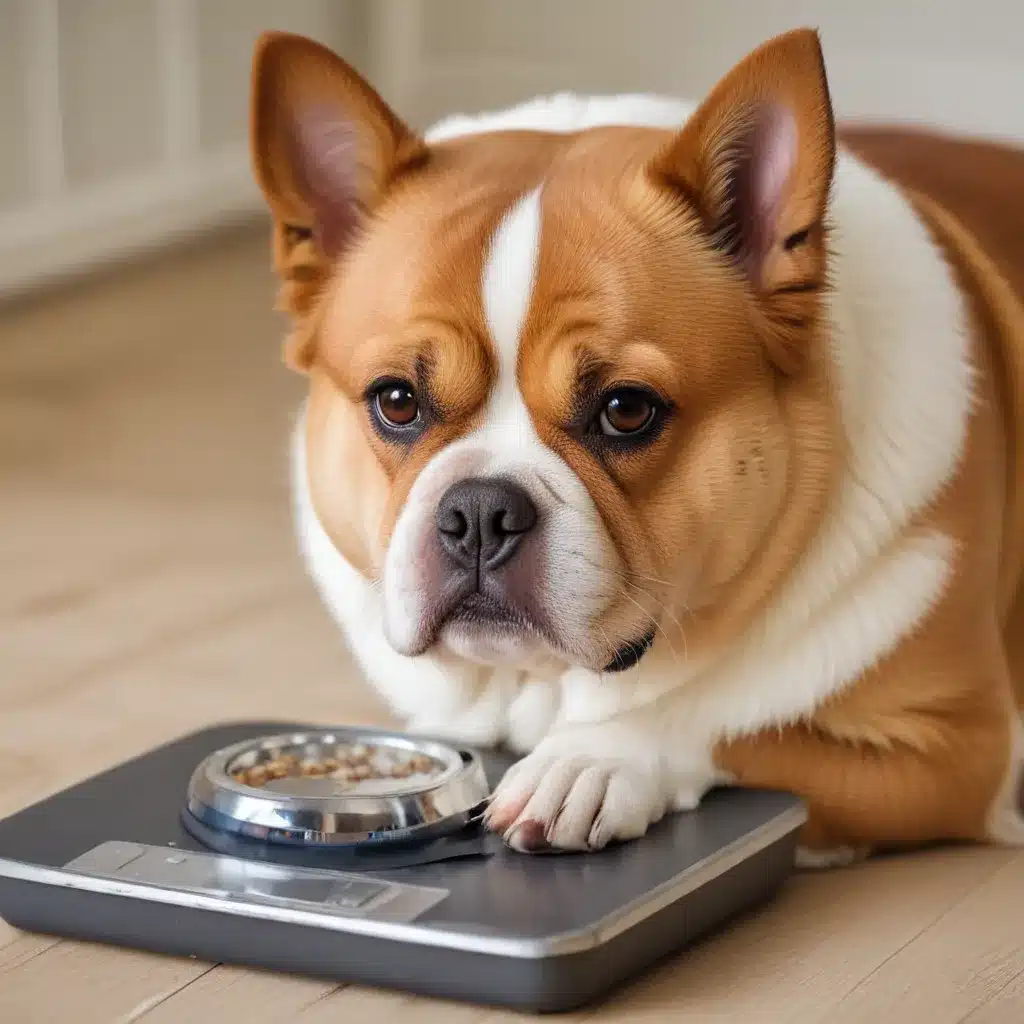
The Bulging Belly Dilemma
As a devoted dog parent, I’m always on the lookout for signs that my furry best friend might not be in tip-top shape. After all, our canine companions can’t exactly tell us when they’re packing on the pounds. And let’s be honest, some of us are a little too quick to indulge our pups with extra treats and snacks.
But obesity in dogs is no laughing matter. It can lead to a whole host of health issues, from joint problems to heart disease. That’s why it’s crucial to be able to spot the telltale signs of an overweight pup. Trust me, I learned this the hard way with my own dog, Buddy.
Buddy used to be the picture of health – lean, energetic, and always raring to go on our daily walks. But over time, I noticed his belly starting to sag a bit more, and he seemed to be slowing down on our jaunts around the neighborhood. At first, I chalked it up to him just getting older. But when I took him in for his annual checkup, the vet delivered some tough news – Buddy was officially obese.
I felt awful, like I had let my best furry friend down. But the vet assured me that with a little diligence and some tweaks to Buddy’s diet and exercise routine, we could get him back on track. And that’s exactly what we did.
Now, Buddy is back to his spry, energetic self, and I’m much more attuned to the signs of canine obesity. That’s why I’m here to share my insights with you, fellow dog parents. Let’s dive in and explore the top indicators that your pup might be packing on the pounds.
The Telltale Paw Test
One of the easiest ways to assess your dog’s weight is by doing a simple paw test. According to the American Kennel Club, you should be able to feel your dog’s ribs without having to apply too much pressure. If you have to really dig in to find them, that’s a telltale sign that your pup is carrying a few extra pounds.
Another handy trick is to take a look at your dog’s waistline. When viewed from above, your pup should have a distinct taper between their ribcage and hips. If their body is more of a straight line or even wider in the middle, that’s another red flag.
And don’t forget to check out your dog’s “tuck” – the area under their belly. A healthy pup should have a noticeable upward curve here, almost like they’re wearing a little fanny pack. If that tuck is more of a straight line or even sagging down, you may have an overweight pup on your hands.
The Weighty Waddle
We’ve all seen those dogs who seem to lumber rather than walk, their bellies swaying from side to side as they move. According to the experts at Burbank Pet, this “waddle” is a telltale sign of canine obesity.
Another giveaway is if your dog seems to be panting more than usual, even during relatively low-intensity activities. Excess weight puts a lot of strain on a pup’s cardiovascular system, so they’ll often struggle to catch their breath, especially in the heat.
And let’s not forget about those telltale rolls of fat. If you notice your dog has developed some extra “jowls” or their neck is looking a little thicker than usual, that’s another red flag that they may be carrying too much weight.
The Dreaded Bathroom Breakdown
As if the physical signs of obesity weren’t enough, there are also some behavioral cues to watch out for. According to the experts at Tracy Vets, overweight dogs often have a harder time with their bathroom habits.
For example, your pup may start having trouble getting up and down to relieve themselves. Or they may avoid going outside altogether, opting to do their business indoors instead. This can be a real hassle for both you and your furry friend.
Overweight dogs are also more prone to developing urinary tract infections (UTIs), as the excess weight puts pressure on their bladder. And let’s not forget about the dreaded “poop accidents” that can happen when a dog is struggling to maintain their weight.
The Struggle is Real
I know firsthand how heartbreaking it can be to see your beloved pup struggling with their weight. It’s a sensitive topic, and no one wants to be the bearer of bad news. But as a responsible dog parent, it’s important to face the facts head-on.
The good news is that with the right diet and exercise plan, you can help your furry friend get back on track to optimal health. And trust me, once you see that spring back in their step and that twinkle of energy return to their eyes, it’ll all be worth it.
So, don’t be afraid to have that tough conversation with your vet. Together, you can develop a customized plan to help your pup shed those extra pounds and reclaim their vibrant, healthy life. And who knows, you might even find yourself getting a little fitter in the process. After all, what better workout partner could you ask for than your loyal, four-legged best friend?
Remember, the key to a healthy, happy dog is staying vigilant and not letting those extra treats and snacks get the better of you. And if you ever need a little inspiration, just head on over to ihavedogs.com – they’ve got a wealth of resources to help you and your pup stay in tip-top shape.

